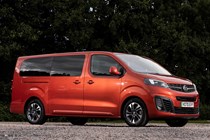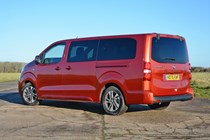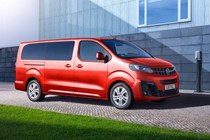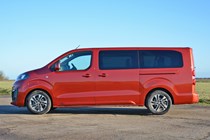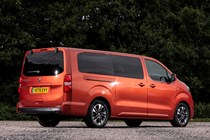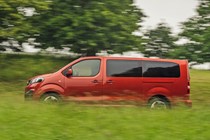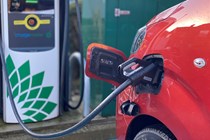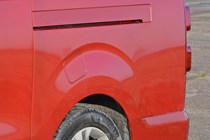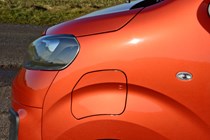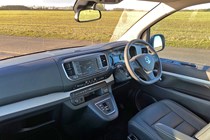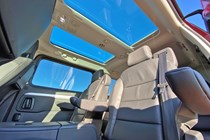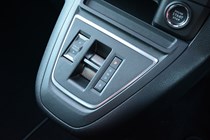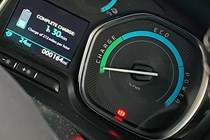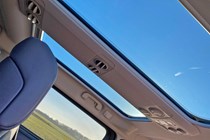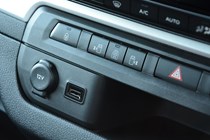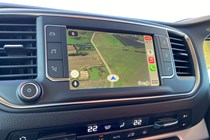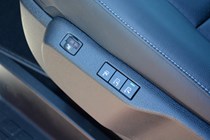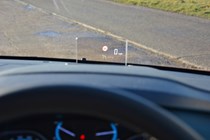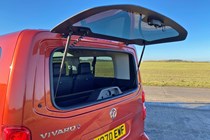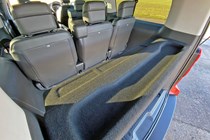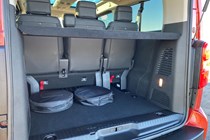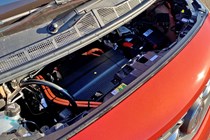
Vauxhall Vivaro-e Life interior, tech and comfort
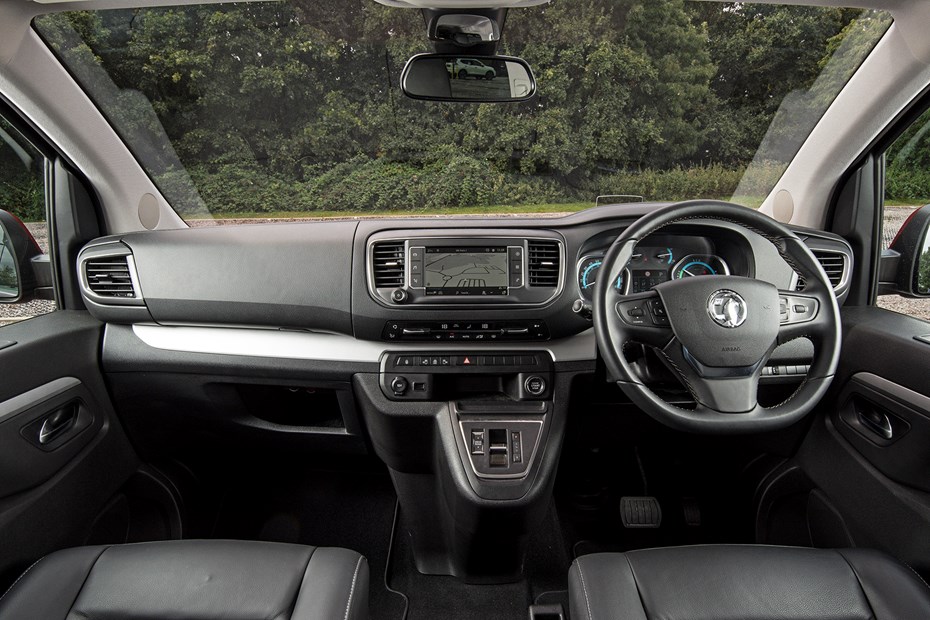
- Dashboard is easy to use but lacks style
- Handful of interior changes over the diesel
- Driving position isn’t ideal
How is the quality and layout?
Both are reasonable considering the sort of vehicle it is. Remember that the Vivaro Life Electric is a van moonlighting as a passenger car – so a lot of its interior components have been lifted straight from the commercial vehicle. The finish will never be as polished as, say, the latest Vauxhall Astra.

The interior plastics are rugged and the switchgear is robust, which is good considering the amount of abuse they’re likely to receive in service as a family vehicle. The seats in the cheapest Combi variant are a little basic, though, so we recommend you opt for the range-topping Ultimate model if your budget can stretch that far. It’ll net you some more comfortable captain’s chairs and black leather upholstery.
Sadly, the EV shares its weird driving position with the diesel Vivaro Life. The steering wheel is offset slightly to the left. Some drivers won’t notice it, while others may find it a constant source of irritation – especially on longer journeys. We recommend you request a long test drive before you buy to gauge whether you can live with it.
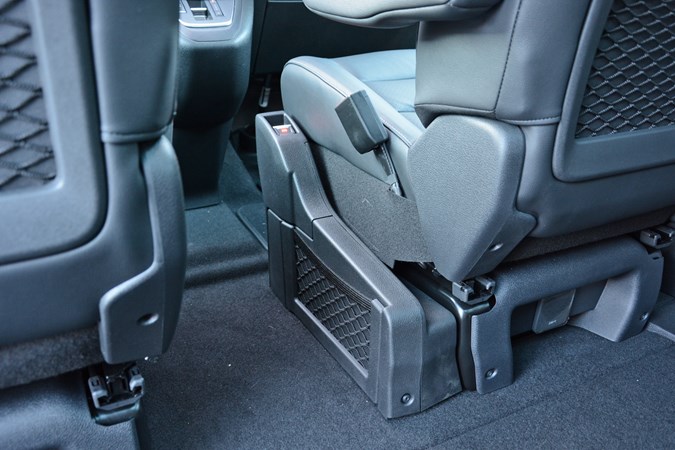
There are some differences between the diesel Vivaro and the electric one. The diesel’s rev-counter has been swapped for a power meter and its rotary gear selector has been replaced by a rocker switch. The EV also gets an electronic parking brake in place of a manual one, with the button for it mounted on a bizarre, almost handbrake-shaped, plastic moulding immediately to the left of the driver’s seat (above). You get an extra storage net, though, which is handy.
Infotainment and tech
Every Vivaro Life Electric comes with the same 7.0-inch infotainment screen, but you can build on the technology that powers it by opting for Vauxhall’s Multimedia Navi Pro package. It’s available as an option on the Combi and Design models, but it’s fitted as standard to the range-topping Ultimate variant.
The standard infotainment system features a DAB radio, Bluetooth connectivity, a USB port and a four-speaker stereo. The Multimedia Navi Pro option builds on this with sat-nav, a ten-speaker stereo and a three-year subscription to TomTom’s connected services, which includes live traffic alerts and speed camera locations.
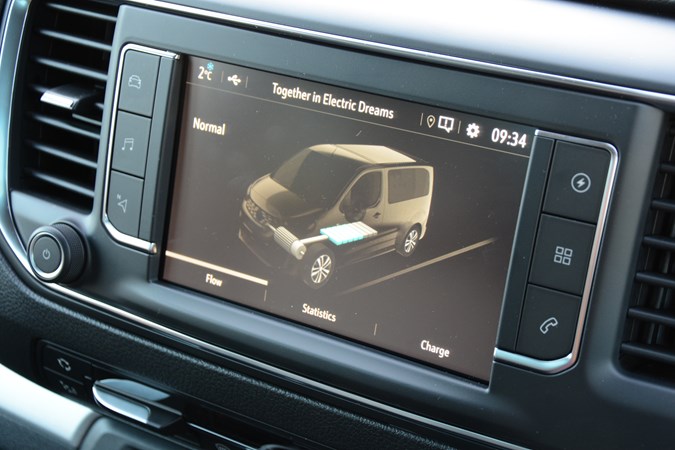
Vauxhall’s upgraded infotainment system is also compatible with the MyVauxhall smartphone app, which gives drivers access to a range of connected services. Using your phone, you can remotely lock and unlock the doors, pre-condition the cabin before starting a journey and schedule charging.
Comfort
- Roomy, but more flexibility would be ideal
- Rides with more composure than the diesel
- Ultimate versions feel more upmarket
As with the diesels, our advice is if your budget will stretch to the Ultimate specification, then to do so – it’s a much more welcoming, if still very black, interior. Similarly, we would recommend fiddling with the Ultimate’s equipment list, swapping the three-person middle-row bench seat for the two captain’s chairs, complete with fold-down armrests. When fitted to face backwards, the whole of the rear cabin feels much more inviting.
Lighter grey and beige interior alternatives would give the Vivaro a huge lift if they were available. But they’re not – so if you’re looking for a more vibrant, upmarket interior then you will have to try out the Mercedes EQV instead.
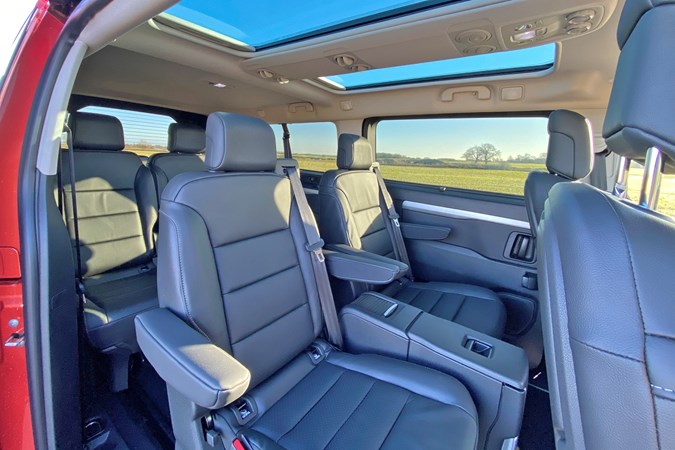
Electrically adjustable front seats are also fitted as standard on the Ultimate model. They’re heated and have a massage facility but, somewhat inconveniently, there is no memory function for the adjustment settings.
Another option worth having is the panoramic sunroof. It can only be fitted to the Ultimate models, but it makes the cabin a much more pleasant place to be, counteracting the drab upholstery with a torrent of natural light. We also like how the rear climate control vents are mounted in the roof. It’s effective even with a space this vast, and heats up quicker than diesel versions.
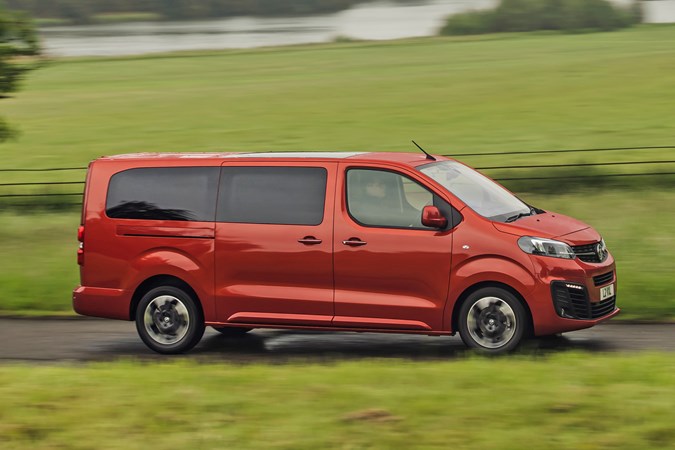
The EV rides better than the diesel, too. The added weight of the battery, concentrated low-down in the van’s body, ensures that the Vivaro Life Electric rarely feels anything but planted regardless of the tarmac’s condition.
It’s also a lot quieter than the diesel. Vibrations through the van’s structure are substantially reduced thanks to the smoothness of the electric drive system, meaning there are fewer rattles and squeaks from the interior fixtures and fittings. Of course, this means you’re more aware of wind noise as air rushes up the windscreen pillars, as well as the sound from the tyres and suspension when road surfaces are suboptimal.


